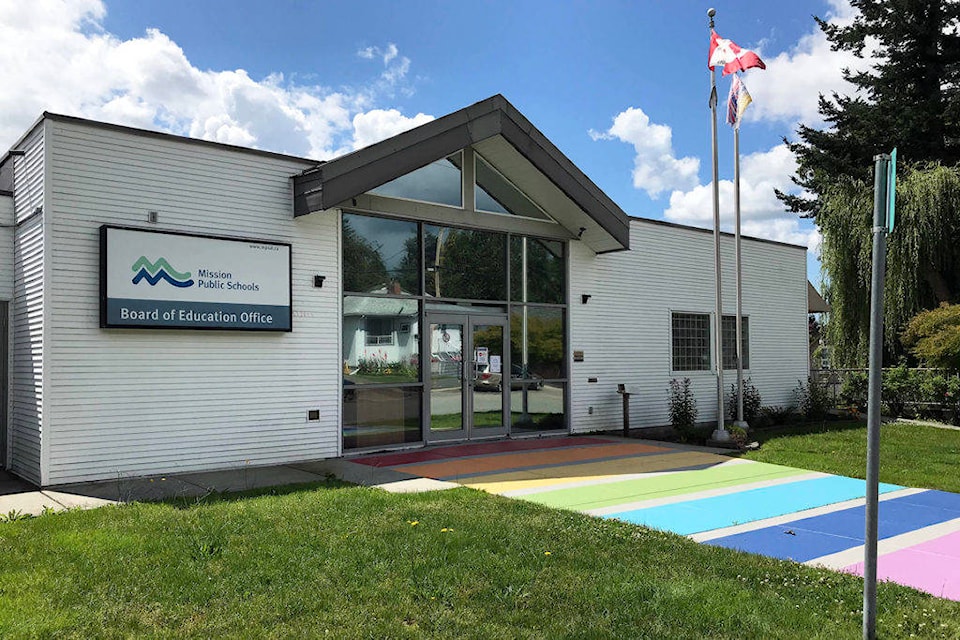Without new schools, Mission’s population growth means shrinking school capacity.
Overcrowding is an ongoing dilemma in many schools, and starting next Fall, some students at Hatzic Elementary will feel the sting.
“All the schools are getting fairly full,” said Superintendent Angus Wilson, and the current solutions are “not easy or fun for anyone.”
“When I got here five years ago, we had all kinds of neat programs running out of the spare classrooms in the schools, those have all been pushed out now.”
Hatzic Elementary will be limiting the number of cross-boundary students next year, and administrators attempting to re-jig catchment to have some in the Dureau area attend Dewdney Elementary, the school board decided on May 18.
If no changes were made, 11 out of 13 classrooms would have class-size violations, meaning teachers would have to be compensated for additional workloads with more resources and time off. A total of 37 students at the school were out of regular catchment zones this year.
The change was not popular among parents in a recent survey. Only two of the 19 respondents were interested in having their child attend Dewdney Elementary. Learning issues, displacement from friends and familiar teachers, and more disruption following COVID were all common reasons provided.
“My eldest child will be going into Grade 2 and has settled nicely in Hatzic. It would be traumatic to leave his close friends,” one parent wrote.
But finding space becomes more complex when other schools are already full, Wilson said.
Eleven students attending Hatzic Elementary are in Albert McMahon’s catchment zone, but that school also has no space. It has stopped accepting cross-boundary students and over 50 per cent of the catchment’s kids are attending other schools.
Cross-boundary students must reapply to their school of choice on a yearly basis. Historically, they’ve been renewed without issue, but in September – for the first time in five years – some applications will be denied. Hatzic has received 31 applications.
“Mission is growing. Don’t just put a Band-aid (on) to accommodate current numbers. Expect the growth to continue,” said one surveyed parent.
Wilson agreed with that sentiment.
Enrolment in the district is growing by 100 new students annually, he estimates, but that growth in unevenly distributed to the north and east.
He said you can gauge which schools have capacity issues by looking at which areas have real-estate development.
“There’s also the long term. Over the next 30 years, the developments out west will effectively double Mission’s population,” Wilson said. “Magic wand: We need three new elementary schools.”
For now, all the district can do is explore redrawing catchment areas and adding more portables, but neither of these are a permanent fix, Wilson admits.
“It can help alleviate things for a year or two,” he said. “The problem is, from a provincial level, it’s cheaper and simpler to just keep adding portables.”
While portables are a fairly cheap solution (estimated $200,000 total price tag), Hatzic Elementary is over 100-years old and needs to be replaced entirely soon.
The district estimates other schools need the additional space more urgently, and it costs $20,000 to relocate a portable. Over the next few years, several hundred students are expected to enroll at both Albert McMahon and Windebank due to new real-estate development.
Finance staff have expressed concern over allocating resources outside of long-term planning, especially when other capital projects are already delayed.
“It’s a short-term gain,” Wilson said. He said new portables, while an easy fix, deteriorate much faster than new schools.
There are a total of 16 portable classrooms across the school district, and Wilson said he’s installed at least eight of those in the five years he’s been superintendent.
Currently, the highest priorities are: First, replace Mission Secondary School; second, replace Hatzic Elementary; third, build an extension for Albert McMahon Elementary.
During the 2020 provincial election, the BC NDP promised Mission $87 million to replace MSS with a new high school. The school was already in need of a seismic upgrade, which would cost $66 million, they estimated.
The Mission School District is now in the process of confirming those estimates, and providing a cost-benefit analysis to the Ministry of Education.
Mission’s two MLA, Bob D’Eith and Pam Alexis, both restated their commitment to the project at a Mission Chamber of Commerce Zoom meeting on May 27.
MSS has been over capacity for at least the last five years, Wilson said. The original school was built in 1954, but several expansion have been made over the years to alleviate enrollment pressures.
“I call it a Frankenstein building because its been build in multiple sections,” he said. “It has no more room to grow.”
